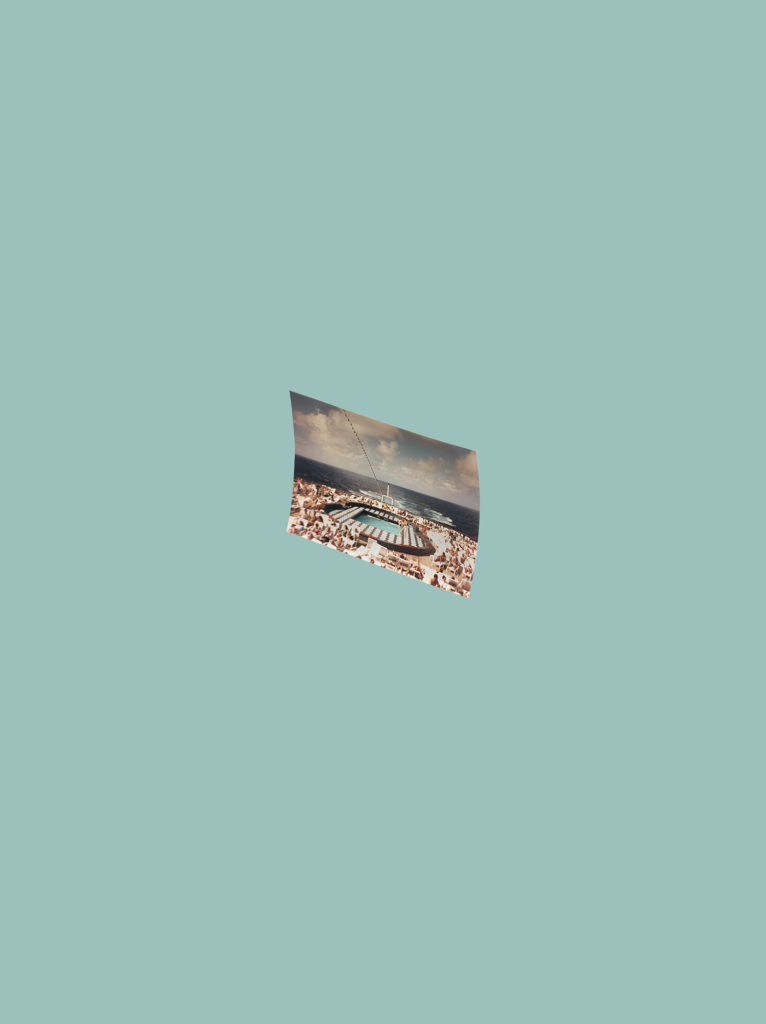
Escape (4), 2013. Chromogenic development print, 25.75” x 19.75” © Nick Marshall.
Introduction:
Photography has long held deep links with tourism. When we seek to escape, search for fantasy, or venture towards either the less common, more exotic, or more famous locations of the world, the photograph is made and held as both a trophy and possessive object. It serves as proof and recipient of visitation, it provides a perceived sense of ownership of the places visited and acts as a portal for memory to occur, a potent but limited allowance for re-visitation. Encoded in tourist pictures is an idealist desire of something better, something worth leaving home for, journeying towards. Of course, this allure of promise has long been used as a tool in commercial enterprises as well. As any advertiser will tell you, the product they are selling will improve your life.
Nick Marshall’s _e_scapes series prods tourism ideals of fantasy and escape through intertwining lines of inquiry. In both his photographs and his paintings, Marshall considers the ways in which tourism is tokenized and maintained in the domestic realm. His work explores the material and vernacular uses of photographs, the idyllic promises put forward by the naming systems of commercial house paints, and the tensions between the personal/familial and the consumer roles we hold in relation to the image.
This conversation is published in conjunction with Another Day in Paradise, a juried exhibition of photographers exploring photography’s deep-rooted tendencies to idealize its subject matter as a promise of something better, cleaner, and more orderly than the actuality of lived experience. Another Day in Paradise will be on view at Gravy Studio & Gallery in Philadelphia, PA from July 15th to August 24th, 2019. The project will open as an expanded group exhibition on In the In-Between on August 1st.
____________________________________________
Gregory Eddi Jones. First off Nick, I think that _e_scapes is the kind of project that requires some unpacking to find its heart. It’s a series that to me is beautifully and densely layered, and touches on many ideas related to fantasy, domesticity, and media-conscious inquiries. I want to try to unfold each of its components, but can you first talk about how the project originated and the inspirations that led you down this road?
Nicks Marshall. I started making the photographs in 2012 as an extension of some of the ideas I was exploring in my graduate thesis work, “from then until now” (ftun). I was really interested in the life of a photograph as a physical object and how that tactility was disappearing in our digitally based lives. Additionally, I was looking at how these physical characteristics could alter our perception of the subject matter and our memory of them. Bends, cuts, tears, punctures, and folds, affect the way we encounter the snapshots, the way we read and remember them. Where _e_scapes went down a different path than the grad work is when I started shifting my focus away from snapshots with portraits (identity) toward c-print snapshots depicting the ocean (landscape).
I was thinking a lot about the way we experience color in photographs and how that relates to the memory of place, particularly of seascapes — air and water, two constantly shifting elements that are dependent on time of day, season, pollution, atmospheric conditions, etc.
So, fast forward a couple of years and I began making the paintings with consumer house paint. They originally were not intended to be a part of this series. I wasn’t even thinking about them at all as related until I had a show coming up and I was trying to figure out what work I wanted to include. I was sitting in my living room watching the paint dry and I realized the photographs and paintings were both getting at our perceptions of color and our desire to be transported to exotic locations. These compositions would go on to form the basis for the _e_scapes book.
Most of my projects incorporate inexpensive, common, or vernacular objects. I like working with materials that are accessible and recognizable to everyone. I think that’s a good entry point for people to be able to engage with the work. There is at least a common language being used.
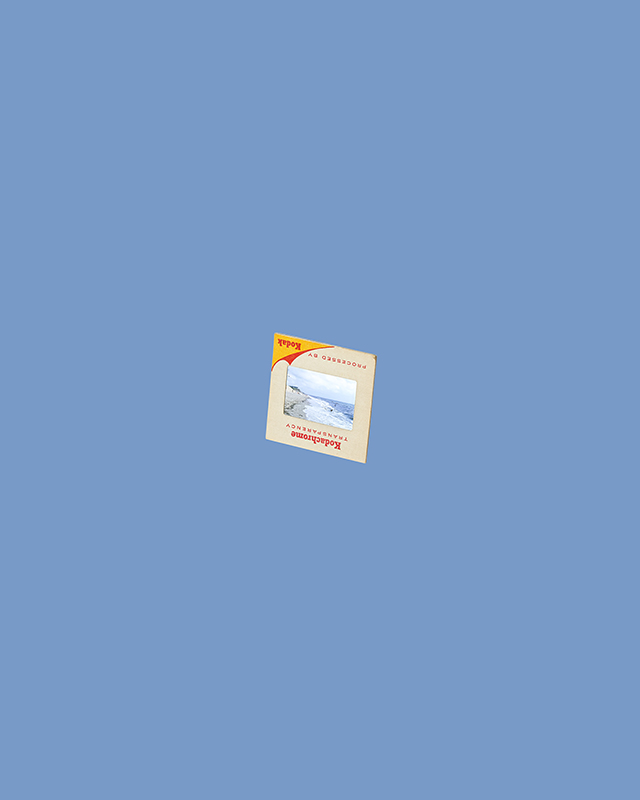
Escape (5), 2013 (Detail). Chromogenic development print, 25.75” x 19.75”. © Nick Marshall.
“It’s funny to think that you can create a temporary oasis if you paint your wall Ocean Kiss 510E-3.”
GJ. It’s always interesting to read the journeys that the creative process can guide us on in such unexpected ways. In some respect, your use of paint doesn’t come from an art historical or media-interest perspective, but one of domesticity and the commercial elements that shape its characterizations. The names assigned to paint hues relate to idyllic promise, a series of paradises of sorts that escapes from the humdrum of everyday domestic life. In essence, you are using the hues of these wall paints and pairing them according to their named references to water and sky, and your paintings with these hues make reference to the basic visual structure of a seascape. What is it about the notion of escape, paradise, vacations, etc that resonates so strongly with you?
NM. Growing up my family collected paintings by Thomas Kinkade. Being around these idyllic and completely unrealistic depictions of landscapes that don’t exist has influenced my approach to the way I think about nature and our desire for escaping to “the good life” promised by consumerism.
Over the past few years, I’ve been researching the history of tourism and how it was formed by the transportation and photography industries. These destinations became fabricated in a way to accommodate and homogenize our experiences. Kodak created “Kodak Picture Spots” around the United States which simplified the picture taking experience and, in a way, discouraged exploration or originality. Now all of our roads have been mapped and imaged through GPS. You don’t even need to leave your home to hop on the road and drive-by Hoover Dam.
I think living in Rochester probably has something to do with it too. The long winters can be unbearable at times and you find yourself daydreaming about escaping the grey. It’s funny to think that you can create a temporary oasis if you paint your wall Ocean Kiss 510E-3. Though this ultimately falls short of being there (this probably goes without saying).
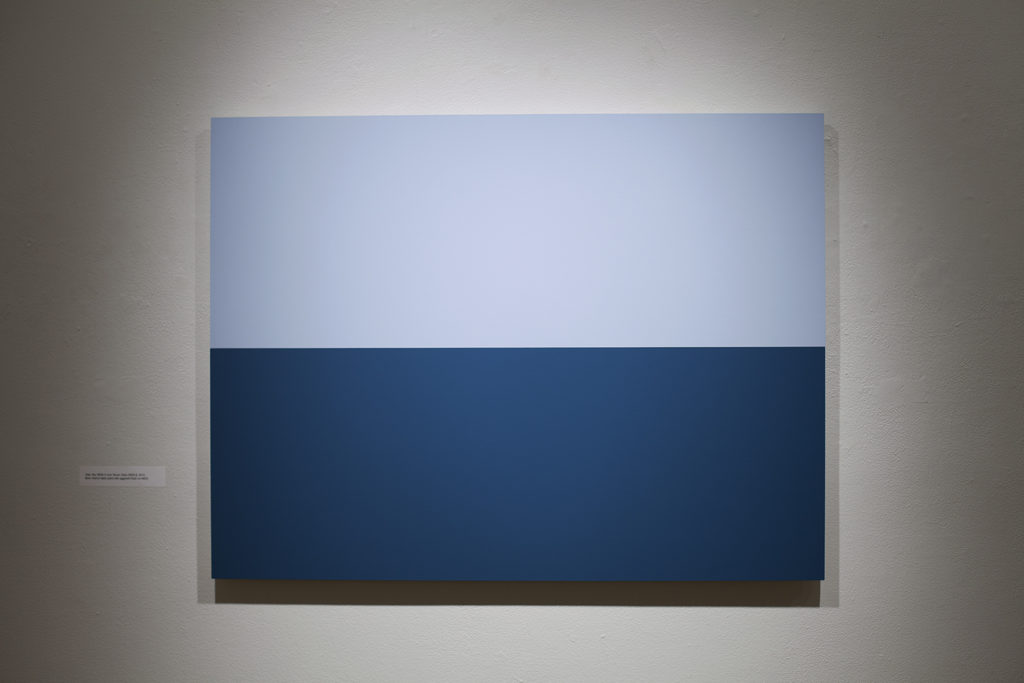
Utah Sky 560A-3 over Seven Seas 560D-6, (2014). Behr interior latex paint with eggshell finish on modular wood panels, 36” x 48”. © Nick Marshall.
GJ. I’ve never heard of Kodak Picture Spots before! It’s got my head spinning about the presumed lack of imagination of tourists with cameras, and the suggestion to embrace shared memory that is almost at the core of the “tourist” experience. I can imagine this loop of tourists visiting places they’ve seen in pictures, making the same pictures, then sharing those pictures with people who’ve never been, in turn providing familiarity that makes the visit to those locations more approachable. So with your interest in the history of tourism, does this more conscious understanding change your own tourist experiences?
NM. Yes. I typically try to do very little research about places I’m going to visit. When I was in Mexico City a couple of years ago visiting a friend, he gave me directions to the bus station and said go toward the pyramids. I had no idea what Teotihuacan was and when I got there it felt like this entire world opened up to me which was completely unexpected. It was one of the most memorable and humbling experiences of my life but at the same time, it felt like I couldn’t fully be present in the landscape. Throughout the site, there were people selling tchotchkes and souvenirs. I don’t hold it against them. It was their town and this was their source of income. I felt like I kept going back and forth between the history of the landscape and the current reality. I was/am a tourist.
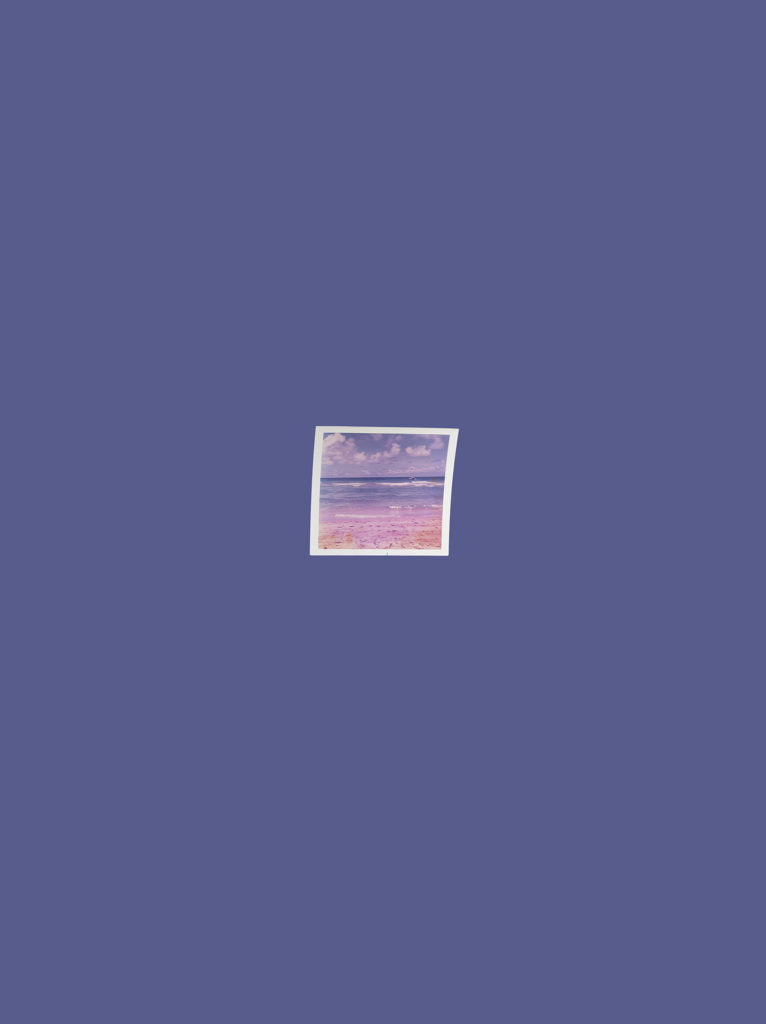
Escape (6), 2013. Chromogenic development print, 25.75” x 19.75”. © Nick Marshall.
GJ. I’m really interested in this notion of escape and fantasy you speak to, and the sort of subconscious illusion of it that is embedded in consumerism. I agree that the contrivance of these suggestions of fantasy falls short, but I think the opposite argument could be made as well. The mind is constantly being tricked by the alluring aesthetics of consumerism, and it’s the sensation of disassociation that might fall short because it’s a space of discomfort that isn’t able to maintain endlessly.
We all succumb to the fantasy eventually, we’re all vulnerable to it, aren’t we? It’s funny because in viewing your work and looking through your book, my mind gets taken away into the imagination of being on a beach, enjoying these seascapes, and the very deconstruction of the fantasy you engage in prompts that very fantasy! I don’t have a question here, but I want to acknowledge that I love work like yours that gets my mind running around in circles.
To switch gears a little, I think it’s interesting that you embrace the physicality of pictures, and imagery of this project consists of pictures of color slides, old bent photographs and the like. Can you talk about your interest in the tactility you are representing? And do you have a personal connection with the photographs included in the project?
NM. I’m glad to hear you get swept away into the horizons! I think I’d be lying if I said there wasn’t something about them that pulls at me too. But for me, it’s also a nagging.
A few of the snapshots in the photo-based work are from my family’s collection. My interest in vernacular photography started when I was in undergrad. I would come home and look through all of these cardboard boxes in my mom’s basement. At that point, I think I was looking for some type of connection with my family. Some type of identity. That grew into my fascination with the object and the power it holds over the loved one who posses it. One day when I was carrying a bag of snapshots up from the basement my mom cautioned me against taking them saying that she was afraid I was going to destroy them (which was not an unfounded assumption on her part). So here were these photographs that were stored (thrown in) cardboard boxes (not even close to archival) that were NEVER looked at. It was just the idea of them existing that was important to her.
Another instance that happened not too long after this was when I met a woman at a local thrift store in Rochester as I was going through a bin of old Kodachrome slides. She started to tell me about her husband’s estranged second cousin who had just passed away and since they were the next closest of kin, they acquired his belongings. Their kids had all moved away from home and she and her husband were trying to downsize so they wanted to get rid of his things but she didn’t know what to do with the photographs. She said she didn’t want to destroy them or to give them to a second-hand store because she was uncomfortable with another person owning them. Her solution was to take them to the lake and bury them. I loved this somewhat bizarre yet totally sentimental spirituality she had prescribed to the images. It was as if the object was a stand-in for the body.
These projects started around the time Facebook was cementing itself as a fixture in nearly everyone’s lives and before Instagram was about to alter the way we consume photographs. Our relationship between memories and photographs has shifted and my work is in many ways about examining this change.
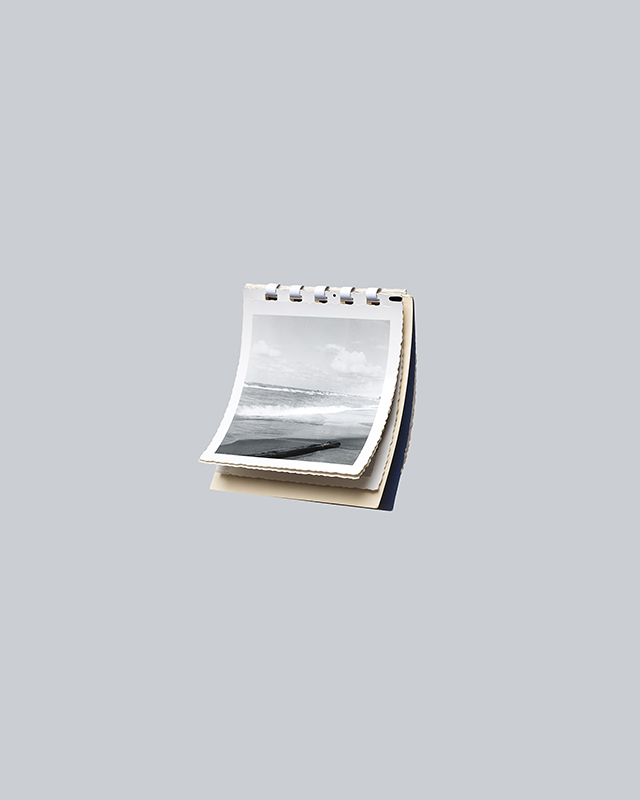
Escape (7), 2013 (Detail). Chromogenic development print, 25.75” x 19.75”. © Nick Marshall.
GJ. We both belong to the last generation that grew up in a pre-digital world when the first experience of looking at photographs, for most, came from the family album. And it’s interesting to think, as you mention, of how the idea of family memory has become fundamentally altered as pictures move away from the family album and shared in real time on social media channels. I can’t help but feel in some way that memories, in general, have become a little less precious. The way we view pictures demands consumption in volume and it’s been a while since I can say I’ve held a photograph in my hands and lingered in it for a while. It’s a wholly different experience vs the immateriality and the networked existence of digital mementos. Do you feel that we have lost something as a result of the shift? Do you feel any sort of mourning or a sense of loss? Do the luxuries and benefits of our digital age come at the expense of different kinds of experiences?
NM. All good questions. I was just talking with some friends (who span 3 generations) about this over dinner the other night. My initial response is that it’s too early to tell. There will be nostalgia for Instagram once something else replaces it. Younger generations will talk about how much it meant to them. It just seems relative. What I think it affects most is memory. I have forgotten every image I’ve seen on social media. I don’t encounter them in any meaningful way that allows me to linger on them. The obvious advantage is the ability to share images with family and friends around the world instantly. Grandparents can watch their grandkids grow up.
The printed photograph offers us the passage of time. It lives with us. It’s been held by our grandparents, our friends, and strangers. It surfaces at unexpected moments when digging through a drawer or opening a shoe box. The throwaway photographs of a finger in front of the lens or a misfire of the shutter are no longer developed, they are deleted. These types of experiences are unique and fundamental to the history of the analog snapshot. So, I suppose we do lose something. We lose the object as a simultaneously shifting experience of the past and present.
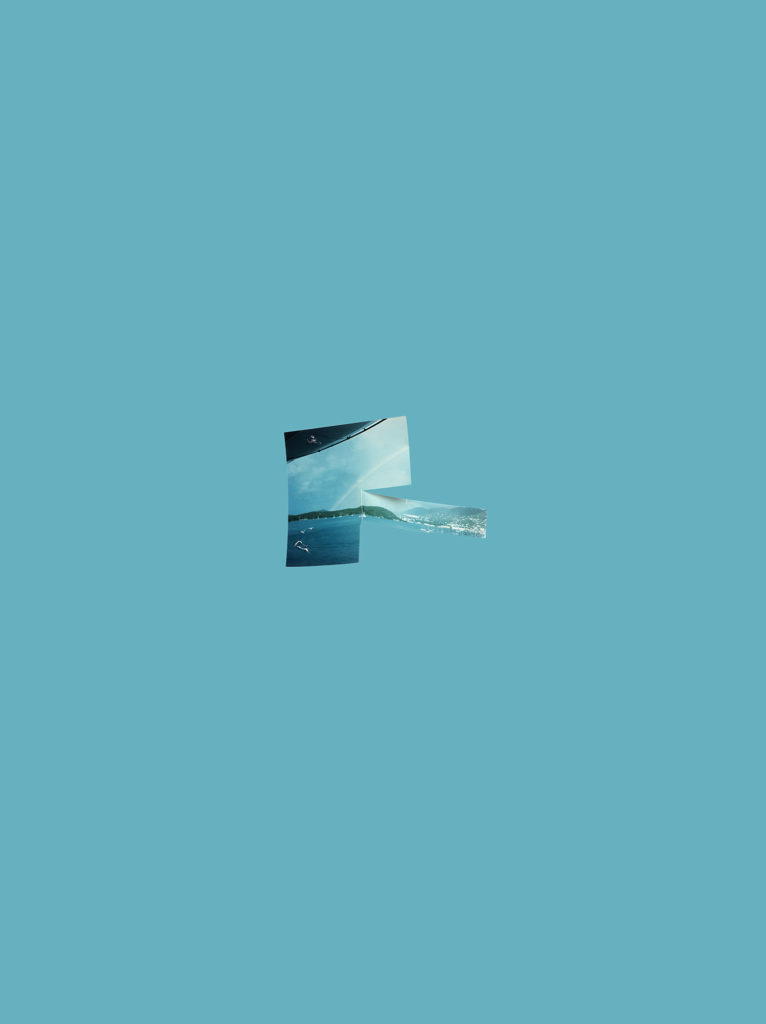
Escape (1), 2013. Chromogenic development print, 25.75” x 19.75”. © Nick Marshall.
GJ. _e_scapes also includes painted works which I find quite clever. You’re using standard house paints to create duotone compositions that resemble seascape photographs. What was the impetus for these pictures?
NM. Now would probably be a good time for me to mention that I work at the George Eastman Museum and part of my job is to collaborate with the curators and graphic designers on exhibition design, which includes determining the wall colors of the galleries. There is an overwhelming amount of paint names that refer to the ocean or sky so I started collecting swatches of them and would arrange them into little colorful Sugimoto-esque compositions of equal parts air and water.
With the sea as a backdrop, the work creates imaginative geographies from our often absurd attempts to define color— in particular, of air and water, two ephemeral elements. Using consumer house paints, the paintings elicit fantasies of locations that are anonymous, inconceivable or contradictory. Titles such as Cool Sky 530E-2 over Shallow Sea520D-4, conjure vistas with no specificity, while Utah Sky 2065-40 over Clearest Ocean Blue 2064-40 forms an impossible horizon. Without the names of the paints, sometimes it is difficult to determine which one is the sky or which one is the sea. Occasionally, the colors are so similar, e.g. Utah Sky and Clearest Ocean Blue that the difference is almost imperceptible. And, to make things a little more confusing, certain brands have their own interpretation of what the sky in Utah should look like.
These subjective representations call on memory and desire to take us away from the everyday to sites of leisure or to destinations for transformative experiences. In doing so, they neglect the history of the sites they are depicting and instead construct temporary realities based on personal and culturally accumulated knowledge that challenge our understanding of place.
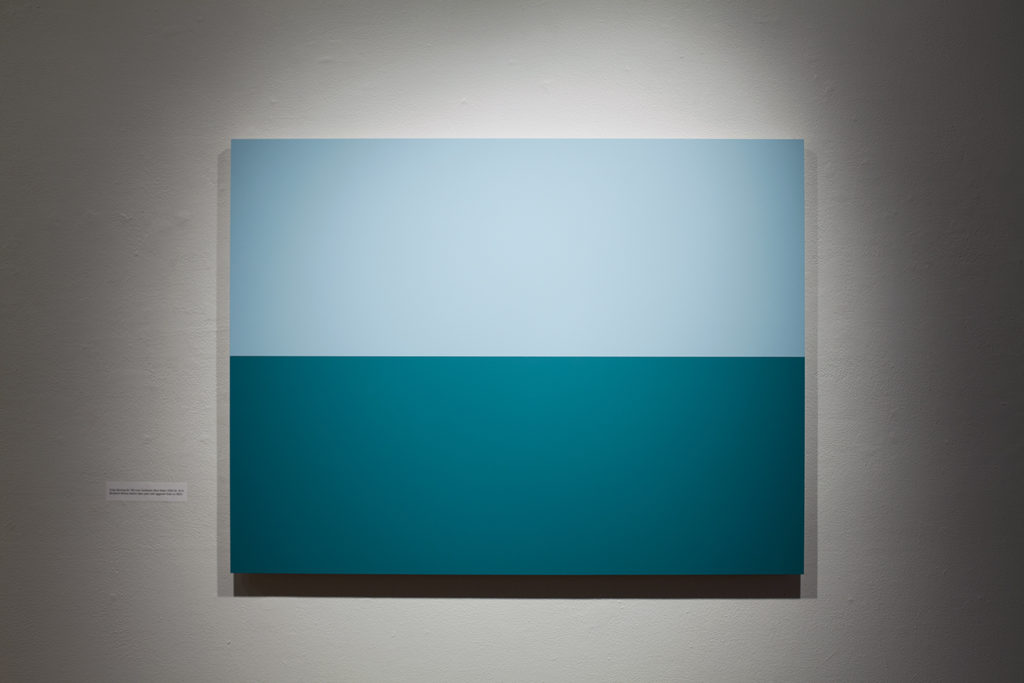
Crisp Morning Air 780 over Caribbean Blue Water 2055-30, (2014). Benjamin Moore interior latex paint with eggshell finish on modular wood panels, 36” x 48”. © Nick Marshall.
GJ. So you finished _e_scapes a few years ago now, what have you been working on since, and what’s coming up in the near future?
NM. I always have about 10 projects going at once, for better or worse. Most of them are related to the ideas I’m working with in _e_scapes, but expand on them in different directions. I’ve been thinking a lot more about how we interact with photographs on our phones.
You Touching Me, Touching Photographs creates a more intimate bond between the Instagram user and myself. Their fingers scroll and tap (if they “like” it) images of my hand scanning in printed snapshots. The work creates an awkward tension that I hope gets the viewer asking themselves questions about what does tactility mean in our lives at this time.
Similarly, Future Nostalgia is a work in progress that examines the way we experience images on social media. Instagram and digital photography, in general, are constantly borrowing the language and aesthetics of analog photography, i.e. filters and editing tools. In Future Nostalgia, I reversed this and asked myself, “what is an aesthetic that is unique to digital photography?” My answer was that brief instance of time where the image is loading and you’re waiting. It’s a temporary image that is blurred and suspends us in a momentary state of anticipation for what the photograph might be. I then replicated this aesthetic in the darkroom to create gelatin silver prints that ask us to linger in that place of uncertainty where we don’t know what the image is and consider it worthy of our attention.
GJ. Thanks for your time, Nick.
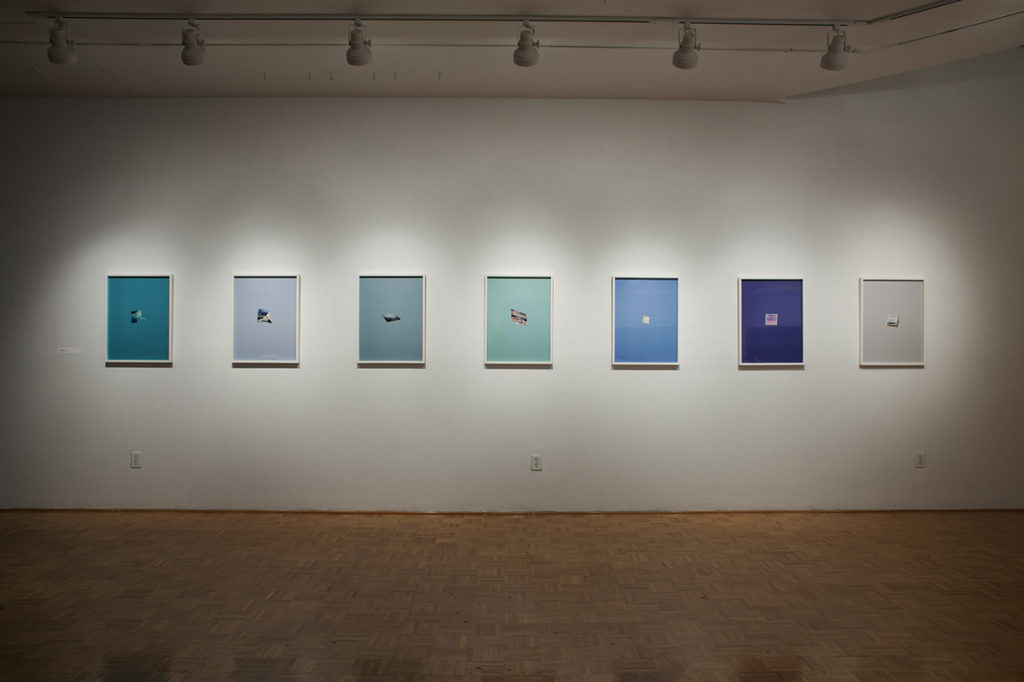
Escapes installation view — Hartnett Gallery (2013-2014)
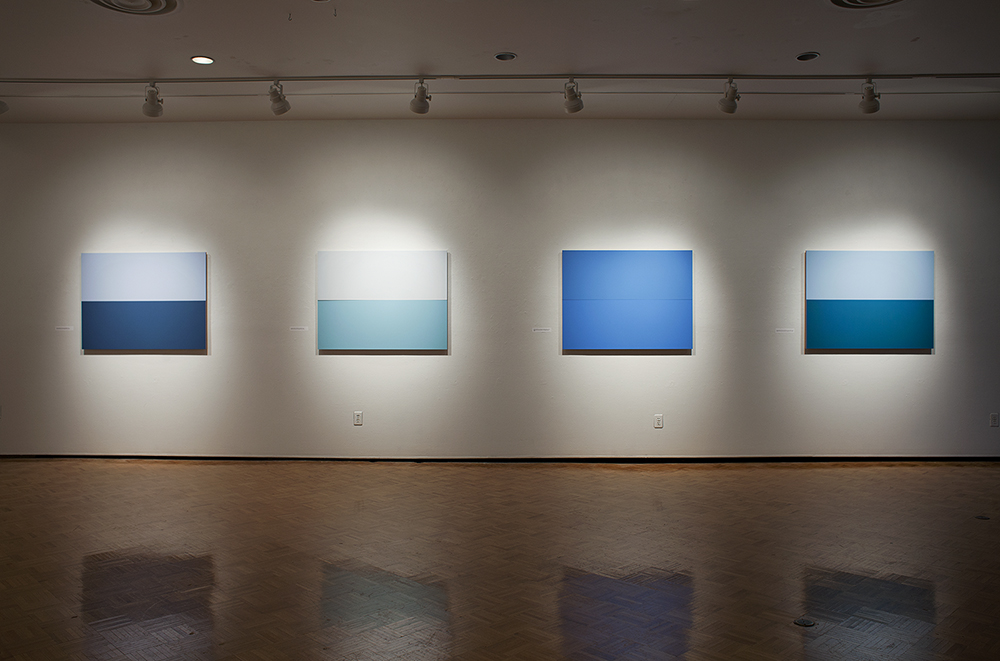
Escapes installation view — Hartnett Gallery (2013-2014)
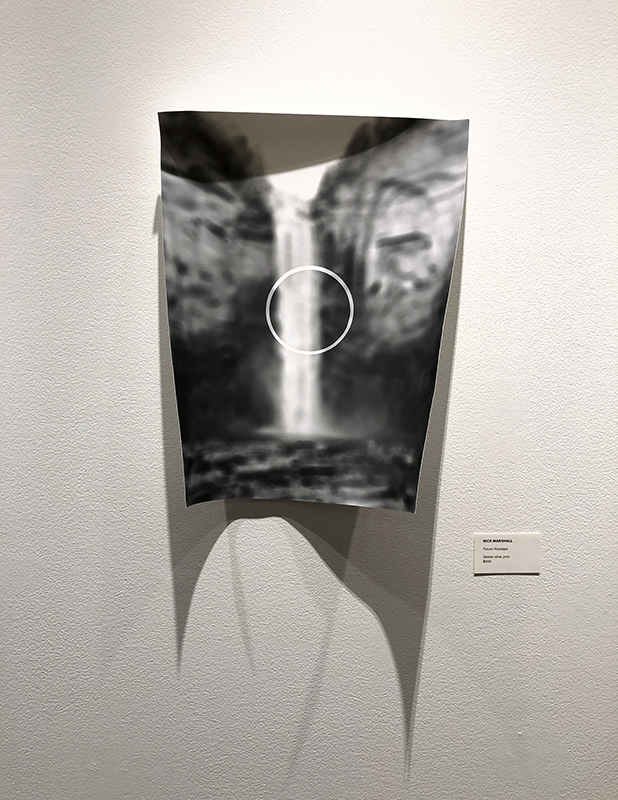
Future Nostalgia, 2018 – ongoing. Gelatin silver print, 11” x 8.5” © Nick Marshall.
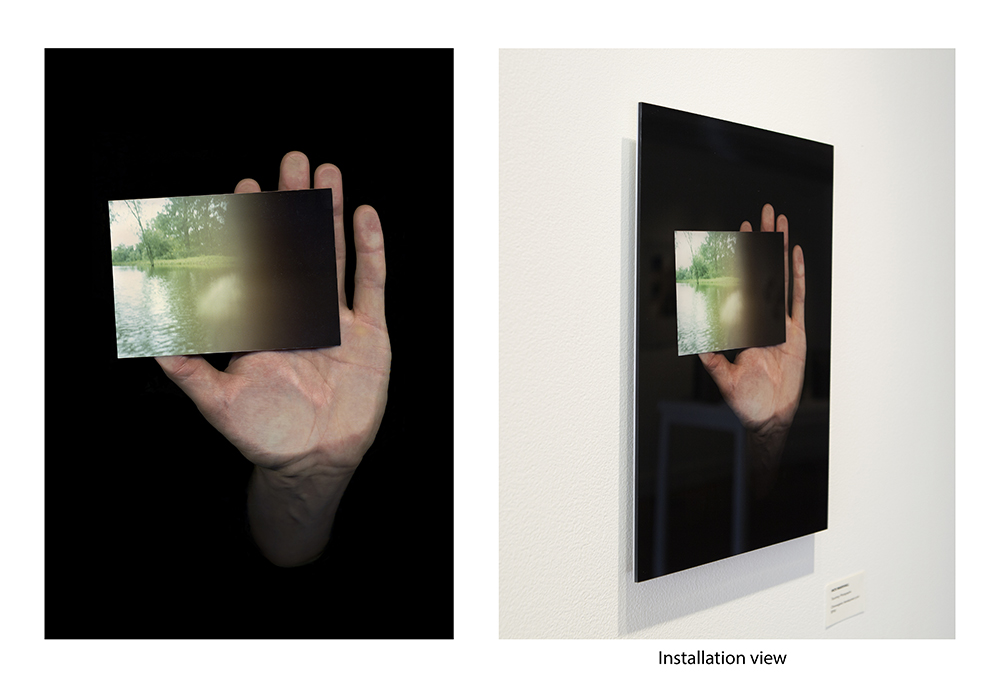
You Touching Me, Touching Photographs, 2018 – ongoing. Face mounted chromogenic development print, 13” x 9”. © Nick Marshall.
Bio
Nick Marshall’s work focuses on our experience of time and memory through objects and materials. Recent exhibitions featuring his work include trans_late at Plug Projects, Synthesizing Nature at View Art Center, A Matter of Memory at the George Eastman Museum, and In Neutral, a collaborative video installation with artist Cory Fitzgerald at Gallery r. In 2016, he published his first book,_e_scapes, with VSW Press. He lives in Rochester, New York.
______________________________________
Stay connected with In the In-Between
_____________________________
Submit your work
